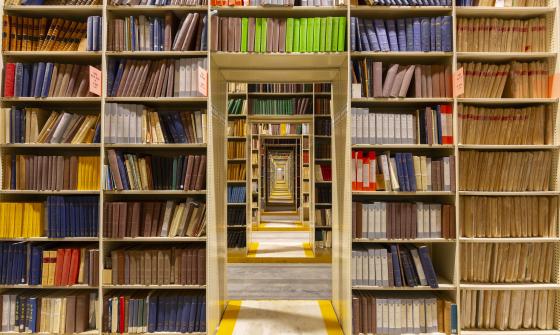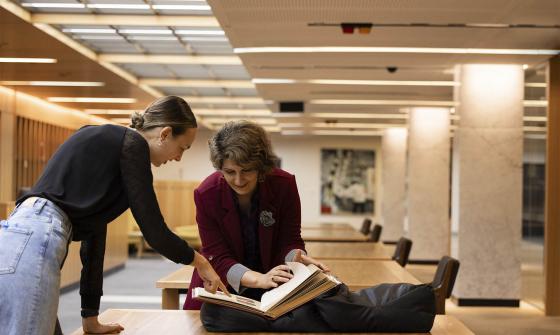Deposit organisational records and personal papers
This is a general guide to the type of organisational records and personal or family papers that are of interest to the Library. This advice may not apply in all circumstances - please consult with the Curatorial and Collection Research Section to determine how your papers relate to these guidelines, as some exceptions may apply.
Have you made a collection offer?
Before you deposit organisational records or personal papers with the Library, you need to submit an offer and we need to accept it.
Find out more about how to make us a collection offer.
Organisational records
What records to deposit
- minute books and policy manuals
- Constitution, Terms of Reference
- office, subject or correspondence files
- files of individual officers (e.g. Secretary, Treasurer, Publications Officer) or members of staff
- reports and submissions compiled or submitted by the organisation
- financial records
- speeches or conference papers presented by the organisation
- historical material including published or unpublished histories of the organisation
- press cuttings if identified and relevant to the organisation
- photographs that are identified and dated
This list is only a guide. In addition to these records, you should aim to keep what are known as 'operational records' that are unique to your organisation and its business. In general, you should preserve records of policy and decision making bodies within your organisation.
Records we may not be interested in
- Records of short term value that may be destroyed after 5-10 years, e.g. low level financial records such as chequebooks, bank statements, receipt books.
- Routine administrative files of no long term value, e.g. subscription files, booking forms, travel arrangements; duplicates, e.g. excess copies of publications.
- Unsorted bundles of loose papers (if these are worth keeping they should be sorted before sending to the Library).
Please assist us by:
- Centralising the transfer of records by having one office-bearer responsible.
- Providing any additional contextual information available, such as names of office bearers
- Packing the records into our archives boxes, which the Library will provide.
Personal or family papers
What papers to deposit
In accepting the papers of individuals who reflect the diversity of Australian society and culture, the Library focuses on all records of lasting value that document the life of that individual.
The papers of an individual generally fall into three categories - personal, family and professional (relating to their profession or career). Personal papers include correspondence, diaries, speeches, photographs, annotated contact sheets, control registers (job logs), caption lists and many other records created during a private and public lifetime. The Library collects these records in their native format (for example, paper or digital).
- correspondence, emails, notebooks and speeches
- diaries, memoirs, draft literary works
- files relating to the individual’s professional life (example: subject or research files)
- research notes, office and subject files
- annotated contact sheets, caption lists, job logs, control records
- reports and submissions compiled or submitted by the individual
- photographs that are identified and dated
- selected databases, sound and audio visual material
- selected publications written by the individual or which are very rare (if not already held by the Library)
This list is only a guide; please consult with us if you have any doubts about the types of records that may be of interest. It may be that the records are unique to you and your life and as such are vital to a complete record or your life or career.
Papers the Library may not be interested in
- Records of short term administrative value that may be destroyed after 5-10 years, e.g. low level financial records such as chequebooks, bank statements, receipt books, booking and travel forms.
- Research notes and data if a summary of the data is available and able to be transferred (please consult the Library before you discard these).
- Unsorted bundles of loose papers (if these are worth keeping they should be sorted before sending to the Library)
- unidentified photographs.
- Reference material (articles, books etc written by other people).
- Duplicates or multiple copies of publications.
How to box and list records and papers
Once your papers or organisational records have been accepted by the Library, they are ready to be prepared for transfer.
To assist the Library we ask that donors pack their material using our archive boxes and prepare a brief descriptive list.
We will provide you with archive boxes to house the records, a list template in Excel or Word format, and guidelines on how to prepare the box list. Folders, plastic bags and other archival packaging are also available on request. When the records have been packed and listed, we will arrange for a courier to collect the boxes.
How to fold an archive box
All archive boxes supplied by the Library will arrive flat-packed. This short video demonstrates how to assemble them with ease.
Before you begin
It is important that the papers to be transferred to the Library remain in the order in which they were maintained by their creator. It is generally not necessary for collections to be 'organised' by donors before transfer as the original order of a collection can also be of great interest to future researchers.
If your papers or organisational records contain 'sensitive' material it is not necessary to remove them prior to transfer. Sensitive material identified by donors or creators can be securely controlled by the Library under special access conditions set by the donor, which may include restricted access or closure of the material for a set period. Please consult Pictures & Manuscripts staff for further advice on the best approach for your material.
How to pack and list your papers
- Transfer the records into the archive boxes supplied by the Library, being careful to maintain the original file order
- List the records as you put them in the boxes using the template supplied by the Library
- Consecutively number each box and the corresponding box list
- Remove any records that are in hanging files and rehouse them in folders
- For sensitive material, please flag the items or files by placing them inside a marked envelope, leaving them in the original file order in which they were created or stored. Indicate which files are sensitive by clearly marking them in the corresponding box list
- When each box is full, seal the top of the box with tape. Please ensure that the boxes are not tightly packed and weigh no more than can be easily carried
- If possible please provide biographical information about the individual or organisation whose papers are being transferred. This may be supplied as a separate document to the box list
- When you have finished boxing the records, send an electronic copy of the box list to the Library along with a completed Rights Agreement indicating your wishes for access and use of the papers
Once the records are ready for transfer, we will contact you and arrange for a courier to transport the papers to the Library.


